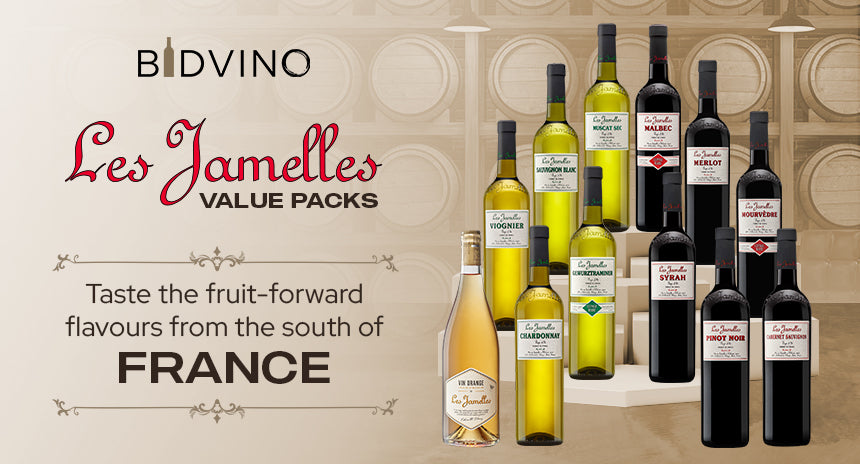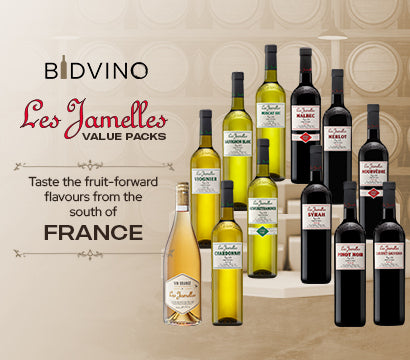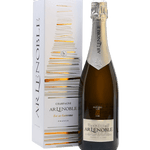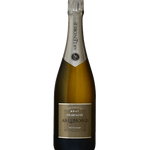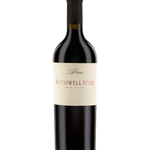You have no items in your shopping cart.
What is Red Wine? An Introductory Guide
Red wine is a key feature at important and special occasions. In some regions, it is an essential part of every meal, making it a popular but important drink. But have you ever considered what red wine really is?
This article explains everything about this famous drink. We’ll cover its production, taste, types, and popular applications. By the end, you’ll appreciate this drink better and know how to select the best red wine for your needs.
What is Considered Red Wine?
A wine is considered red when it is made from dark-colored grapes, also called black grapes. Although red wine gets its name from its vibrant red color after vinification, it offers more than the pigment. Unlike other wines, red wines are made with the grape skins in the mix during fermentation.
Besides its color, red wine has a distinctive structure, influenced by its unique vinification. It also has various exciting flavors, depending on the style of the wine, the grape variety used, and the terroir or soil of the vineyard, which are often noted on Burgundy labels—if you know what to look for. Deep dive into the world of Burgundy labels here Burgundy label.
How Red Wine is Made: A Simple 5-Step Process
Red wine is made following the general, simple five steps in wine making, from grape harvesting to bottling. This section details each step, highlighting the activities specific to red wine making:
1. Harvesting and Crushing
The process of red wine making begins with harvesting dark-colored or black grapes. Grapes are generally picked at their peak ripeness; however, the exact harvest time depends on factors such as the grape variety, weather conditions of the vintage, and the desired winemaking style. Once harvested—either by hand or machine—the grapes move on to the crushing stage.
After harvesting, the next step is to destem and crush the ripe grapes to release the grape juice. While this is a common step for all wine making, maceration is necessary for red wine production.
Maceration is the process of leaving the grape skins and seeds in contact with the juice to form a “must” throughout the fermentation process. This is a unique step in red wine making that gives it a unique structure and flavor.
2. Fermentation
Fermentation begins when the crushed grapes, now a “must,” are transferred into fermentation tanks. This is a process where yeast breaks down the sugars in the juice, converting them to alcohol and carbon dioxide. The process may either rely on yeast naturally occurring in the grapes or on those added by the vintner.
During maceration in this stage, tannin, flavor, and color are extracted from the solid particles in the must into the juice. This influences the final characteristics of the wine produced, including its color, structure, and taste.
To enhance extraction, it is important to regularly mix the floating skin (cap) with the juice in the fermentation tank. Red wines often undergo malolactic fermentation that converts sharp acids to softer ones, for a smoother taste.
Depending on the winemaker, you can have a primary and a secondary fermentation when producing red wine. Primary fermentation, usually 5-14 days, aims to break down sugars. On the other hand, secondary fermentation targets characteristic improvement. It can extend the process from weeks to months, depending temperature and variety.
3. Pressing
This step begins immediately after fermentation. It is the process of separating the juice from the grape seed and juice to produce the red wine.
You can press grapes and extract other wine before fermentation, pressing after fermentation is a must for red wine. This strategic process ensures that the juice extracts sufficient aroma, tannins, and color from the grape skins for improved structure and characteristics.
4. Aging
Pressed grape juice, now wine, is transferred into stainless steel tanks or oak barrels to age. This allows the wine to mellow out and develop complexity.
It provides sufficient time for chemical reactions to alter the wine’s composition and sensory profile. Aging helps to soften harsh acids, reduce astringency, and develop new aromatic compounds in your red wine.
Your choice of storage containers also affects the characteristics of your red wine during aging. For example, stainless steel preserves the wine’s fruit flavor, while oak barrels add flavors like vanilla and by offering the wine continuous but moderated interaction with oxygen in a process called oxidative ageing.
5. Clarification and Bottling
After aging, you must clarify your wine to remove sediments or cloudiness. You can achieve clarification through fining, racking, filtration, or centrifugation. Clarification is important to make your red wine visually appealing and improve its stability.
Bottling comes after a thorough clarification to make your wine ready for storage, distribution, and enjoyment.
Types of Red Wine
Although all red wines are made from the same general processes, the different grape types and specific production processes produce different types of wines. As a result, red wine is classified based on several characteristics, including taste and color.
This section explores some red wine classes based on popular characteristics.
Red Wine Classification based on Taste
Red wine is often classified based on taste, either as sweet or dry. Consider the meaning of these two categories and how to make them:
Identifying the Sweet Red Wine
Many wine enthusiasts wonder, “What kind of red wine is sweet?” A sweet red wine is a wine that contains high amounts of residual sugar after the wine is fully processed and ready for consumption.
Dark-colored grapes, the primary ingredient for red wines, naturally contain sugars. While yeast breaks down this sugar during fermentation, not all the sugar is lost in this process.
Additionally, some winemakers add sugar or reduce yeast and primary fermentation time. They do this to encourage a high residual sugar and produce a sweet red wine.
If you’re looking for a sweet red wine, below are some popular options to explore:
- Fortified wine or port
- Ruby Port
- Lambrusco
- Tawny Port
- Ross Dolce
- Vin Santo Rosso
What Kind of Red Wine is Dry?
A dry red wine is the opposite of a sweet red wine. It is a wine with low residual sugar, usually 10 grams per litre (g/L). This type of wine usually has a non-sweet taste. While they do not necessarily taste like bitters, they have an astringent taste covered with a variety of flavors.
This wine is made from grapes with low natural sugar or a thorough fermentation process with sufficient yeast. Some of the most astringent red wines are often described as “bone dry.” They also pair well with a wide variety of foods.
Dry wine options are among the most popular red wines. Some common examples include:
- Pinot Noir
- Malbec
- Merlot
- Cabernet Sauvignon
- Syrah
Red Wine Classification Based on Body
There are three key classes of red wines based on body or thickness, influenced by the wine’s region, grape variety, and the specific winemaking process. Let’s explore each category:
Exploring the Light Red Wine
When asked what a light red wine is, many may think of the shade of the wine’s color. However, a light or light-bodied red wine describes a wine with a smooth, delicate flavor and refreshing texture.
Light red wines usually have higher acidity and lower alcohol content. They often highlight a mild fruit taste, often a cherry or berry flavor. This wine category is easier to drink, making it the best option for casual gatherings. The Pinot Noir is an excellent example of a light red wine.
The light red wine perfectly represents what a smooth red wine should taste and feel like. Therefore, it is the best category of wine for people looking for a refreshing and easy-going wine drinking option..
What is a Bold Red Wine
The bold red wine, also called the full-bodied red wine, is a rich-flavored wine with higher alcohol levels and an astringent taste. Wines in this category highlight deep fruit flavors like black currant, blackberry, and plum.
These wines leave a lingering finish and a drying sensation, more suited for people who enjoy stronger, bolder flavours. Full-bodied wines are best suited for intimate dinners. The Cabernet Sauvignon is a good example of a bold wine.
The Medium-Bodied Red Wine
If you’re wondering what a medium-bodied red wine is, it is the perfect balance between bold and a light red wine. Medium-bodied red wines have a good balance of acidity, alcohol content, and flavor profile.
Wines in this category are neither too heavy nor too light. Their alcohol content generally sits between 12.5% and 13.5%. Embracing the characteristics of both light and bold red wine categories makes this wine category more versatile. Thus, these wines are suitable for a wide range of palates and food pairings.
Medium-bodied red wines have a slightly dominant fruit flavor with a significant hint of acidity. This makes them well-suited for beginners learning to drink wine. Tempranillo and Merlot are top examples of this wine category.
The Truth About Dark-Colored Red Wines
If you’re asking what is the darkest wine, grape varieties such as Syrah/Shiraz, Malbec, and Petite Sirah are generally at the top of the list for producing the deepest, most intense shades. While a darker color can hint at a fuller body, higher alcohol, or more concentrated flavors, it’s not a direct indicator of quality.
The shade of a red wine—whether it’s nearly opaque or closer to the lighter wine red color 30—is influenced by factors like grape variety, alcohol level, body intensity, and the wine’s age. Analyzing color can help you identify what’s in the glass, but some lighter-colored wines, like a top-quality Pinot Noir, can easily match or surpass the finest dark reds in excellence.
Conclusion
Red wine is popular and important for good reasons. Different categories often have distinct taste flavours and applications. They are made special through maceration, which improves their overall characteristics.
With this detailed guide, you can now seek and select the best red wine for any occasion, considering taste, flavor, body and balance.
If you’re looking for a reliable source to get the best red wines, check out our red wine collection at Bidvino. We offer high-quality wine in all categories at affordable prices and with good service.
Frequently Asked Questions About Red Wine
Below are some frequently asked questions about red wine:
What Defines a Good Red Wine?
A good red wine is defined by some key characteristics, including the wine’s balance, depth, length, character, and complexity.
Is Red Wine Healthy?
When taken moderately, red wine is healthy for consumers. It provides antioxidants that help protect against heart disease and other age-related conditions.
